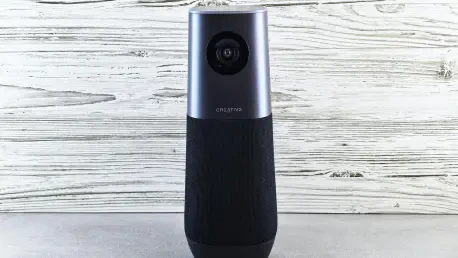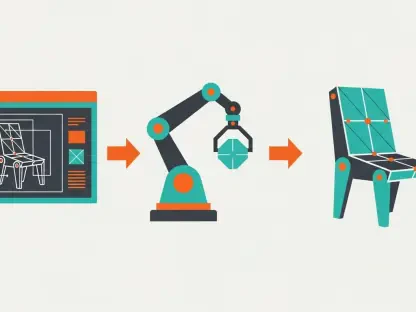In a world where technology evolves at breakneck speed, Amazon has taken a significant leap forward with the introduction of Alexa+, a cutting-edge virtual assistant powered by generative artificial intelligence, marking a pivotal moment for the tech giant. This innovative upgrade aims to redefine how users interact with smart devices in their daily lives. With the virtual assistant market becoming increasingly competitive, Amazon’s latest offering is designed to reclaim its leadership by delivering unparalleled personalization and conversational depth. Unveiled as a direct response to advancements from rivals, Alexa+ integrates sophisticated AI models to provide a seamless, intuitive experience that goes beyond the capabilities of its predecessor. This development signals a new era for smart home technology, promising to transform mundane interactions into dynamic exchanges. As Amazon rolls out this ambitious update, anticipation builds around how it will reshape user expectations and set new standards in the industry.
Redefining Virtual Assistance with AI Innovation
The foundation of Alexa+ lies in its integration of generative AI, powered by Amazon Bedrock models such as Nova and Anthropic, which elevate it far beyond the original version, often referred to as Classic Alexa. Unlike the earlier model that depended on static, pre-programmed responses, this enhanced assistant can engage in fluid, context-aware conversations that mimic human interaction. It effortlessly manages multiple prompts within a single session, ensuring that discussions flow naturally without the need for constant repetition. Furthermore, Alexa+ can generate unique content on demand, whether crafting responses or assisting with creative tasks, making it a versatile tool for a variety of needs. This shift to dynamic interaction represents a significant technological advancement, positioning the assistant as a forward-thinking solution in a landscape where user demands for smarter, more responsive systems continue to grow.
Another remarkable aspect of this AI-driven transformation is the assistant’s ability to adapt to individual user patterns over time, offering a tailored experience that feels uniquely personal. By remembering preferences and routines, Alexa+ can anticipate needs and provide relevant suggestions, akin to advanced memory functions seen in other leading AI platforms. This level of customization ensures that interactions are not only efficient but also meaningful, as the system learns from past exchanges to refine its responses. For instance, it can adjust reminders or automate tasks based on established habits, streamlining daily activities with minimal input. Such capabilities highlight Amazon’s focus on enhancing user engagement through intelligent design, addressing a critical demand for technology that evolves alongside its audience. As a result, Alexa+ emerges as a powerful companion in navigating the complexities of modern life with ease and precision.
Competing in a Crowded AI Landscape
Amazon faces intense competition in the virtual assistant arena, with players like OpenAI’s ChatGPT, Microsoft’s Copilot, and Google’s Gemini setting high benchmarks through their own AI innovations. Despite commanding nearly two-thirds of the U.S. smart speaker market with Echo devices, Amazon has been playing catch-up in adopting generative AI technologies—until this latest release. Alexa+ is crafted as a strategic countermeasure, equipped with advanced features to not only match but potentially exceed the offerings of its rivals. Its ability to retain user preferences and deliver contextually relevant interactions sets a new bar for what virtual assistants can achieve. This move underscores Amazon’s determination to maintain relevance in a rapidly shifting industry where staying ahead of technological trends is paramount for market dominance.
Beyond matching competitors, Alexa+ introduces capabilities that aim to redefine user expectations, focusing on seamless integration into everyday routines with a level of sophistication previously unseen in Amazon’s lineup. The assistant’s knack for holding extended conversations without losing track of context ensures that users can engage in complex queries without frustration. This contrasts sharply with earlier models that often required repetitive clarification, highlighting a leap forward in usability. Additionally, by leveraging generative AI, the system can assist with diverse tasks, from answering intricate questions to aiding in content creation, catering to both casual and professional needs. This versatility is a direct response to the growing sophistication of competing platforms, illustrating Amazon’s intent to recapture the imagination of tech enthusiasts and everyday consumers alike, reinforcing its position as a leader in smart home innovation.
Strategic Rollout and Device Integration
To ensure a smooth introduction, Amazon has opted for a phased rollout of Alexa+ through an Early Access program initiated in the spring of this year. This cautious strategy allows for real-world testing and refinement before a broader launch, reflecting a commitment to delivering a polished product. The upgrade is compatible with an extensive lineup of Echo devices, including models like the Echo Show 8 (both recent iterations), Echo Show 11, Echo Dot Max, and Echo Studio, along with their variations designed for younger users. Such wide compatibility ensures that a diverse range of customers, whether new adopters or long-time Echo owners, can experience the benefits of this advanced technology. This approach not only builds confidence in the system’s reliability but also demonstrates Amazon’s focus on inclusivity across its user base.
Equally important is how this rollout strategy balances innovation with accessibility, ensuring that the transition to Alexa+ feels intuitive for users of varying technical expertise. By initially limiting access to select participants, Amazon can gather valuable feedback to address potential issues, enhancing the assistant’s performance for the eventual full release. The selection of compatible devices also indicates a deliberate effort to cover a spectrum of user environments, from compact smart speakers in small spaces to more robust setups in family homes. This thoughtful deployment underscores a broader vision of making AI-driven assistance a ubiquitous part of daily life, regardless of the specific hardware in use. As the program expands, it will likely pave the way for even more devices to join the ecosystem, further embedding Alexa+ into the fabric of connected living.
Navigating Pricing and User Access
Following the initial access phase, Alexa+ will transition to a subscription-based model priced at $20 per month, aligning with the cost of other premium AI services in the market. However, for those with an Amazon Prime membership, this advanced assistant comes at no additional cost, a decision that could significantly boost adoption among existing subscribers. This pricing structure reflects a balance between offering cutting-edge technology and maintaining affordability for a wide audience. Meanwhile, for users hesitant to commit to a paid plan, the option to continue using Classic Alexa remains available, although the duration of this availability remains unspecified. Such flexibility aims to cater to diverse financial preferences while introducing a premium tier of service.
The dual-access model raises intriguing questions about the long-term strategy for supporting both versions of the assistant, particularly regarding updates and feature parity. While the subscription fee positions Alexa+ as a high-value service comparable to leading AI tools, it also introduces a potential barrier for cost-conscious users who may prefer sticking with the free alternative. Amazon’s inclusion of the upgrade with Prime membership mitigates this concern to some extent, leveraging an existing loyalty base to drive engagement. Additionally, this pricing approach signals a shift toward viewing virtual assistants as premium utilities rather than basic add-ons, mirroring trends across the tech industry. As the rollout progresses, monitoring user response to this model will be crucial in determining whether it strikes the right balance between accessibility and innovation.
Transforming Visual and Functional Experiences
A standout feature of Alexa+ is the enhanced user interface, particularly on Echo Show devices, where a redesigned, streamlined layout offers a more engaging visual experience. The adaptive display adjusts based on proximity, presenting simplified views from a distance and detailed, personalized screens when users approach. This thoughtful design ensures that interactions are both visually appealing and contextually relevant, catering to varying user needs throughout the day. Such advancements highlight Amazon’s dedication to refining not just the auditory but also the visual aspects of smart device interaction, creating a more cohesive and intuitive user journey that aligns with modern expectations.
Beyond aesthetics, Alexa+ deepens functionality through integrations with other Amazon services, such as Ring subscriptions, which add layers of utility for connected home ecosystems. This synergy allows users to manage security features or access real-time updates directly through the assistant, transforming it into a central hub for home management. The focus on enhancing cross-platform compatibility extends the assistant’s reach, making it a vital component of a broader network of smart tools. These improvements reflect a holistic approach to user experience, where every interaction is designed to be seamless and purposeful. As a result, Alexa+ not only elevates individual device performance but also strengthens the interconnectedness of Amazon’s technology offerings, paving the way for a more integrated future.
Reflecting on a Bold Step Forward
Looking back, the unveiling of Alexa+ marked a defining moment for Amazon, showcasing a resolute effort to adapt to the accelerating pace of AI innovation. The introduction of generative capabilities, strategic rollout through early access, and thoughtful pricing structure demonstrated a comprehensive approach to reclaiming market leadership. Compatibility with a wide array of Echo devices ensured that this advancement reached a broad audience, while visual and functional enhancements solidified its appeal. These steps, taken with precision, addressed the competitive challenges head-on, positioning Amazon to meet the evolving demands of tech-savvy users. Moving forward, the focus should shift to monitoring user adoption and feedback, particularly regarding the subscription model, to refine accessibility. Additionally, expanding integrations and device support could further cement Alexa+ as an indispensable tool, ensuring that Amazon continues to shape the trajectory of virtual assistance for years to come.









